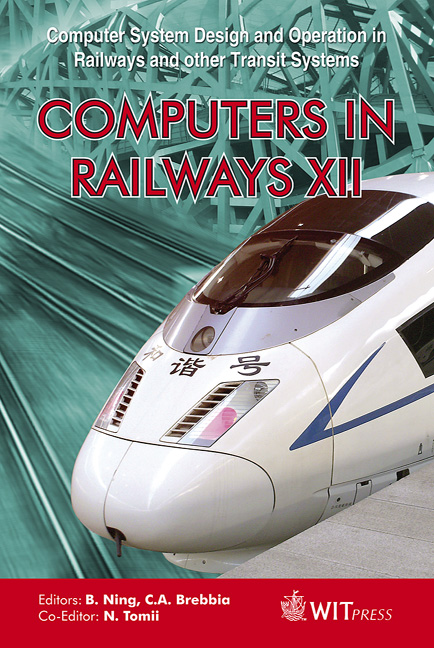ROSA – A Computer Based Safety Model For European Railways
Price
Free (open access)
Transaction
Volume
114
Pages
11
Page Range
771 - 781
Published
2010
Size
946 kb
Paper DOI
10.2495/CR100701
Copyright
WIT Press
Author(s)
J. Schütte & M. Geisler
Abstract
On the basis of the European Safety Directive 2004/49/EC, the recently created European Railway Agency (ERA) elaborates currently amongst others a scheme for Common Safety Methods (CSM) for European Railways, as well as first definitions of Common Safety Targets (CST) and Common Safety Indicators (CSI). In order to support this work of the ERA, the German and French Ministries for Research supported a larger project, involving Deutsche Bahn AG (German Railways), SNCF (French Railways), INRETS (French National Institute for Transport Research) and the TUD (Dresden University of Technology), to develop a computer based environment to analyse and optimize Safety Characteristics and Safety Indicators of railways. This ROSA (Rail Optimization Safety Analysis) has concluded at the end of 2009 after three years of research with a first complex ROSA toolset and analysis results. The ROSA model and toolset, as well as first applications and an outlook, will be presented in this paper. Keywords: railway safety, hazards analyses, barrier model, safety UML model, computer based quantified safety analysis, common safety targets, common safety indicators. 1 Background to and outline of the ROSA model After several harmonization activities in the European railway domain (Technical Specifications of Interoperability, High Speed and Conventional Railway Packages, ERTMS) the European Commission had published the socalled European Safety Directive for Railways [1, 2] in 2004 with the ultimate
Keywords
railway safety, hazards analyses, barrier model, safety UML model, computer based quantified safety analysis, common safety targets, common safety indicators





